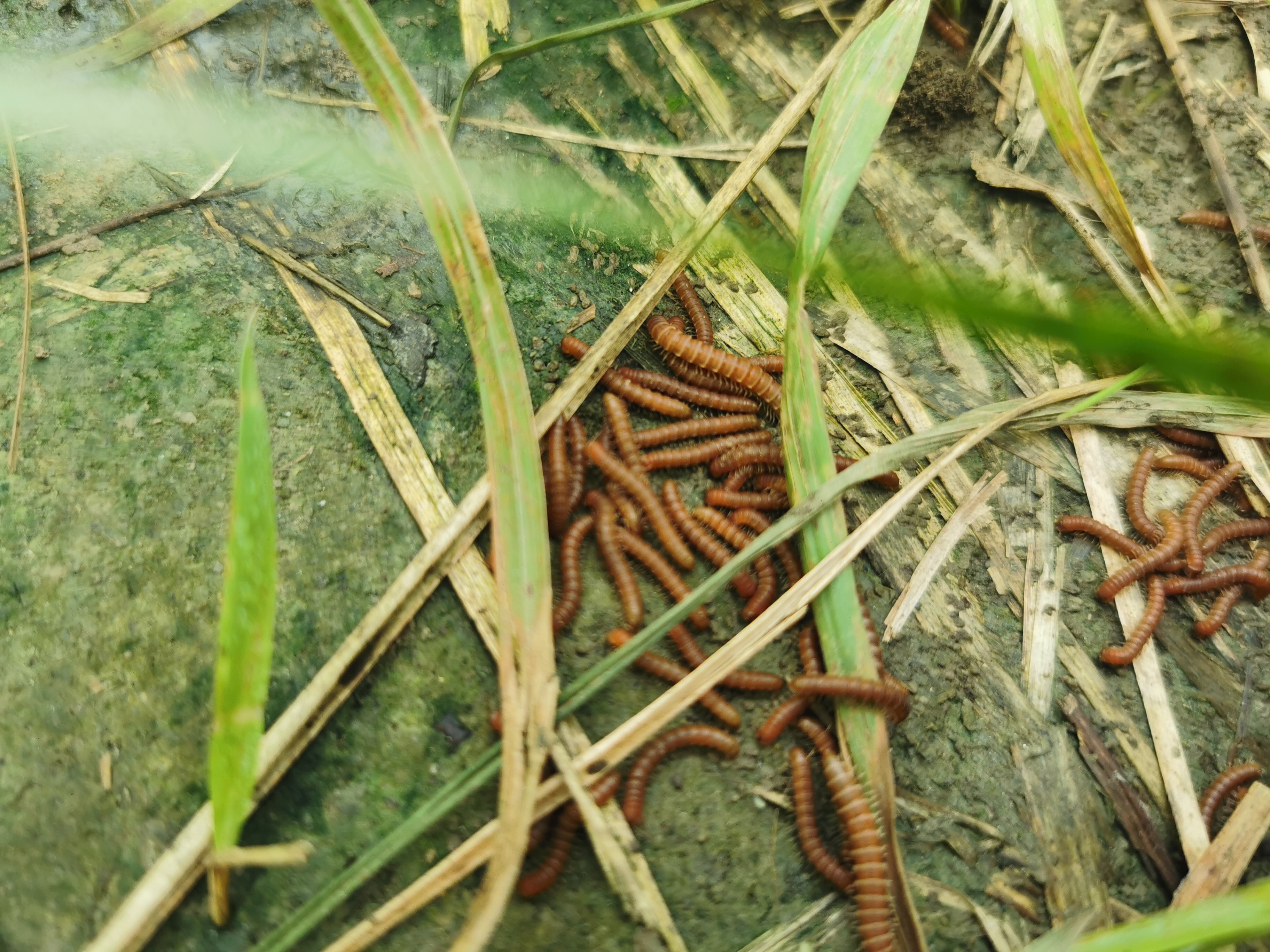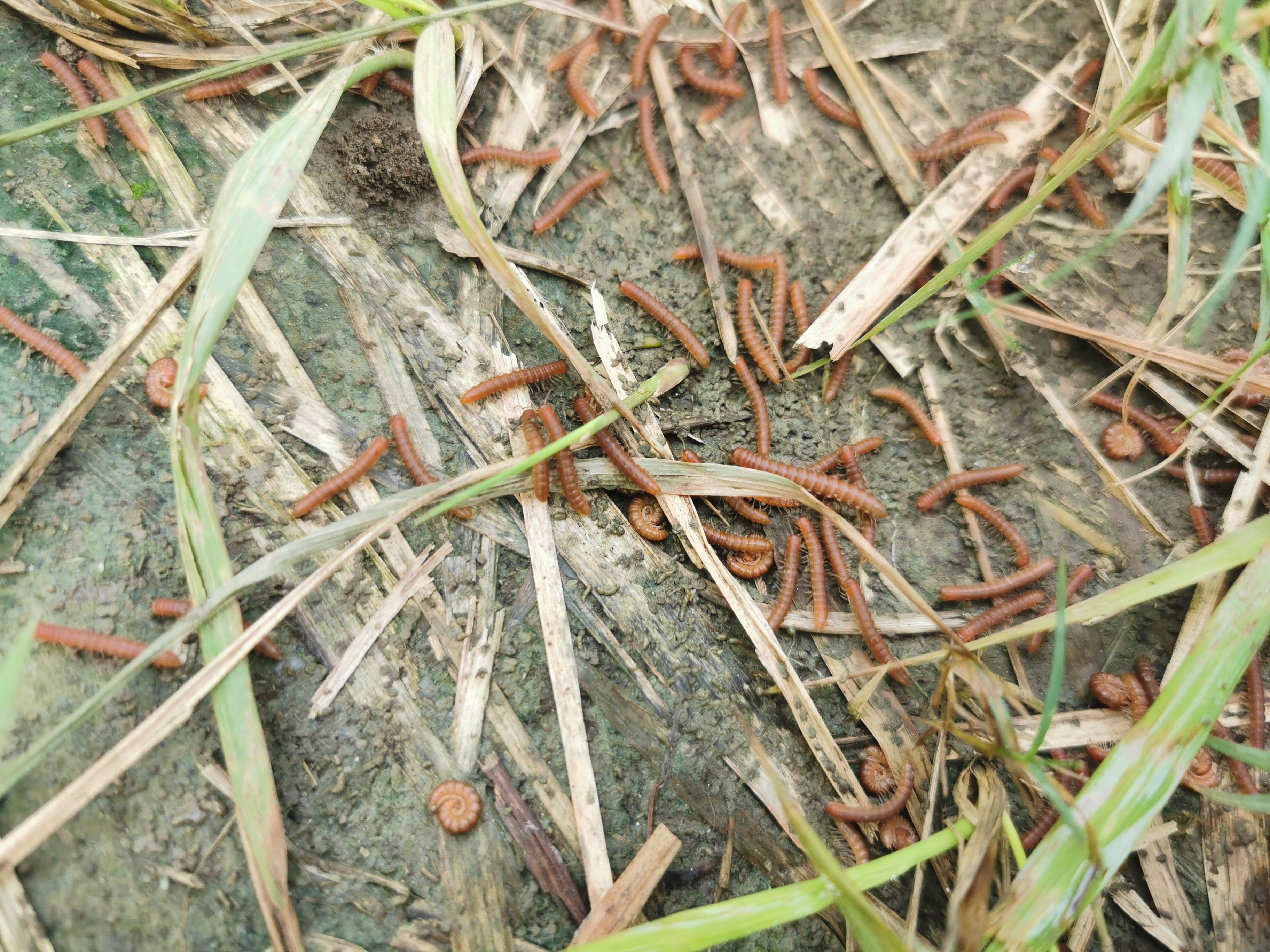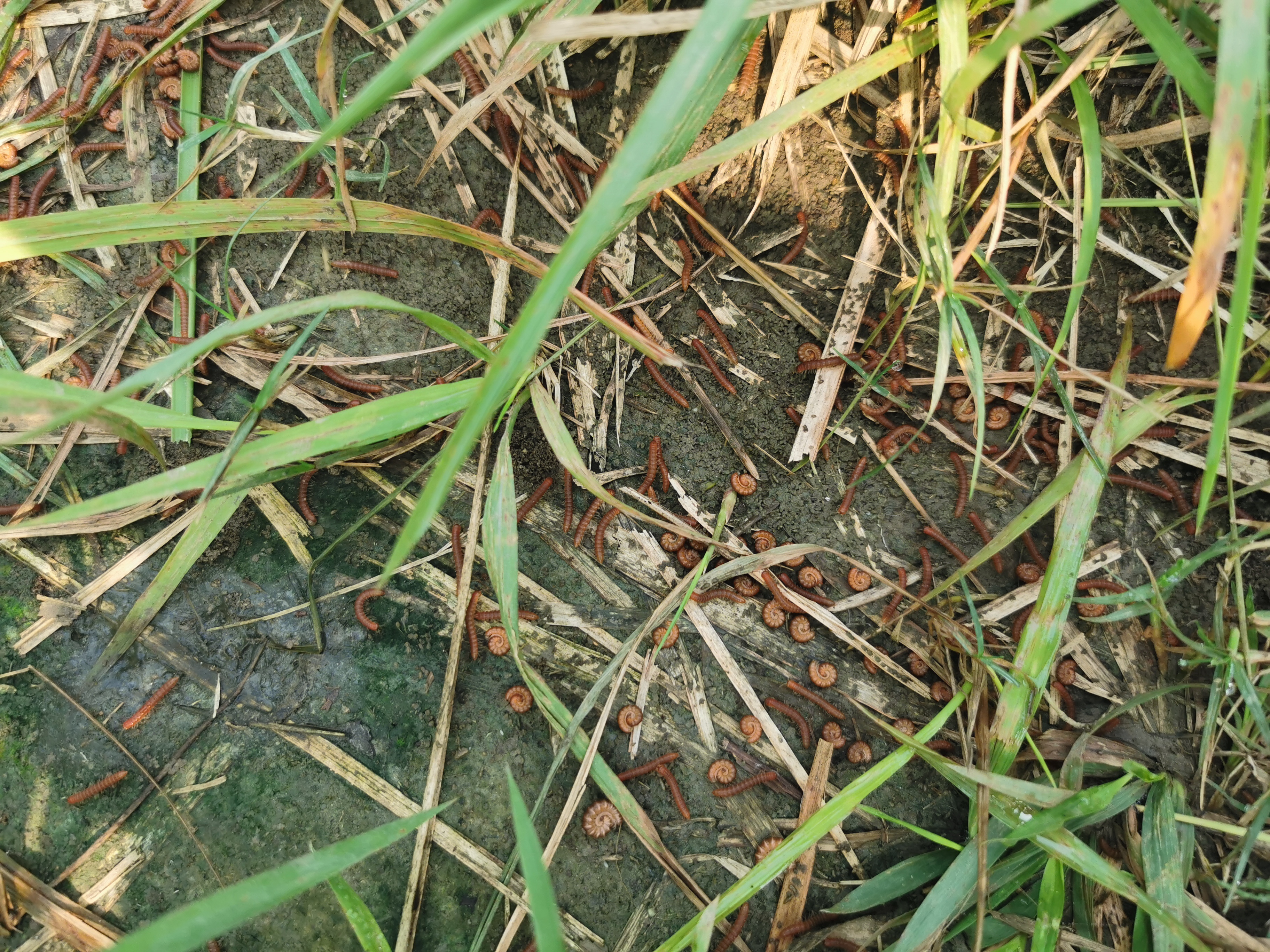Millipede
| Latin name | observation date | Location |
|---|---|---|
| Millipede | 02.11.2024 | Meherpur, Khulna, Bangladesh |

Millipedes are arthropods from the class Diplopoda, known for their elongated bodies with multiple segments, each usually having two pairs of legs. Despite the name "millipede," most species don't have a thousand legs; they generally have between 30 and 400 legs. Millipedes are primarily detritivores, meaning they feed on decomposing plant matter, making them essential to soil health and nutrient recycling. Millipedes have a cylindrical or slightly flattened body with a head, antennae, and numerous segments, each with two pairs of legs (unlike centipedes, which have one pair per segment). To protect themselves from predators, many millipedes curl up into a tight coil, with their hard exoskeleton acting as armor. Some species can also secrete irritating chemicals, including cyanide, to deter predators. They thrive in moist environments, such as leaf litter, soil, and decaying wood, where they play a vital role in breaking down organic matter.
Millipedes reproduce through internal fertilization. After mating, females lay eggs in soil or decaying material, where the young hatch and grow through multiple molts. Millipedes are a fascinating example of nature’s recyclers, with a unique physiology and an essential role in ecosystem health.





| Camera used | Smartphone |
|---|---|
| Lens | Cell phone camera |
| F-stop | - |
| Iso speed | ISO |
| Focal length | MM |
| Photograph | Millipede |
| Location | Meherpur, Bangladesh |
| Photographer | @najidulislam |
| Link to original | community |
|---|---|
| Link | https://www.inaturalist.org/observations/250140054 |
| Latitude | Longitude | Map |
|---|---|---|
| 23.83512 | 88.80904 | https://www.openstreetmap.org/#map=11/23.8221/88.7462 |
0
0
0.000
I've never seen this before, what is this?